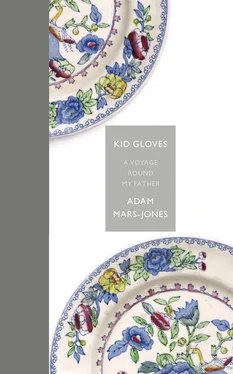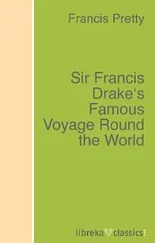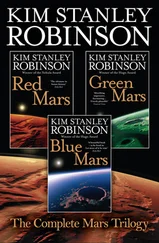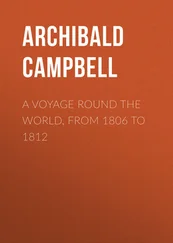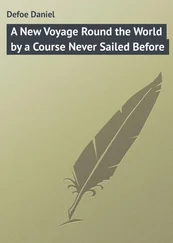By this time I had decided that spending time in America would do me good. I applied for a Harkness Fellowship, a sort of contraflow Rhodes scholarship enabling British students to attach themselves to American academic institutions. The protocol was for applicants to approach their university of choice directly to arrange possible admission, and the obvious place to go was the University of Virginia, where Alderman Library had a major collection of Faulkneriana, Faulkner being the subject of my supposed PhD.
Geography is hardly my strong suit, but I realized that Virginia was not close to California and to Mike. Obviously I hoped to see him again. I also felt that exposure to a more energetic set of manners would be good for me.
The Harkness selectors turned me down, I imagine because my proposal was rather feeble. American Literature was a paper I had done well on at Cambridge (where it had only recently been introduced), perhaps because it was a literature, at least in the nineteenth century, unconfident about its relationship with the English canon. As a refugee from Classics, lacking an English A-level, I shared that unconfidence. Faulkner was not by a long chalk my favourite American writer, but at least his output wasn’t conclusively ranked, as Melville’s and Hawthorne’s were, with Moby-Dick and The Scarlet Letter making their other work seem inconsequential. There was work to be done. How was I to know that at the time more American PhDs were undertaken on Faulkner than on Shakespeare?
My acceptance letter from U. Va arrived weeks after my rejection from Harkness. I showed it to Dad in a spirit of wry amusement, but he told me I should take it up anyway. He would supplement the little stipend I was given by the Department of Education and Science. I tried to make clear that this acceptance was not the accolade he assumed, what with American universities being businesses in a way alien to our domestic assumptions, but he repeated his offer. And I accepted it.
I don’t think for a moment that he was treating me as a remittance man, to use the traditional word for the unrespectable family member who is paid to keep a suitable distance from those he might embarrass. I was a functional part of the Gray’s Inn household, someone he could rely on to be cheerful company for Mum while he was away on circuit, as he so often was.
Virginia was the first place where I was able to present myself as gay from the outset. Charlottesville was symmetrically Anglophilic and homophobic (Alcoholic Beverages Commission statutes made it illegal for gay people and other prohibited groups to be served alcohol), so some people had a silly prejudice in my favour and others had a silly prejudice against me. I made women friends, which was intoxicating, and much easier with any ambiguity dispelled. I involved myself in the Gay Student Union but didn’t have a sex life to speak of. Gay students tended to drive to D.C. at the weekend for their pleasures, and the bicycle was my only means of transport. There was an underworld, but I didn’t explore it. I remember a graduate student saying, after the sauna at the University gym was destroyed in a fire, that on the whole he would rather that the Parthenon had fallen down. I knew nothing of that.
I went to Alderman Library, which unlike the University Library at Cambridge had open stacks — meaning that you could find things you didn’t know you wanted. I read Martin Amis, Ian McEwan, Craig Raine, Michel Tournier, Mario Mieli’s Elementi di Critica Omosessuale , and other books in the same run of shelves such as Tearoom Trade and Nos ancêtres les pervers . I never even entered the room where the Faulkneriana was stored. Instead I Xeroxed The Times crossword from the copies of the paper which arrived in batches every few weeks, and solved the puzzle over a bottomless cup of coffee (meaning it would be refilled as often as you wanted) in the Virginian restaurant ‘on the corner’ — the designation of a particular stretch of street facing the university. At the bookshop on the corner I bought The World According to Garp, Gay American History and C. A. Tripp’s The Homosexual Matrix . I ‘audited’ a creative writing class, meaning that I attended without being assessed, since I wasn’t studying for an American degree. My surroundings suited me, and I managed to get a little writing fellowship (the Hoyns) for the next year, and taught writing at the modest 250 level in the year after that. By then I had a contract with Faber for Lantern Lecture , and Dad’s attitude towards me changed decisively. No doubt I had changed too. Meeting me after my first year in the States, Tim thought I had grown taller — unlikely — and much louder, which was certainly true, since I had learned to hold my own in a more raucous conversational tradition than the one I had been used to. Americans used to say that Brits weren’t ‘self-starting’, that they waited with pretended diffidence for the invitation to shine. I was now officially self-starting.
It took Mike a little longer to get his career started. His big break was winning the design competition for California’s Vietnam War Memorial. This was a major enterprise, since one casualty in ten came from the state, the largest single loss. Partly for this reason there were issues of cultural politics involved in the project.
Maya Ying Lin’s National Monument in Washington had been controversial from the moment her name was announced as responsible for the winning design. She was of Chinese descent, and she was female. She was also still an undergraduate at the time. (The competition was judged blind, with entries identified only by number, and she stood out in a field of more than a thousand.) Her outsider status might be an advantage in some quarters, but grief is territorial. Did she have a right to voice the national pain?
Her design was un-heroic, even anti-heroic. Names of the dead were etched on walls of black granite, in chronological order of casualty, without any additional information — rank, unit, decorations. Visitors would see themselves reflected in the polished stone as they searched the roll-call for their loved ones. Remembrance of the conflict as a whole took priority over any individual combatant, so that if you wanted to find one particular name you had to consult a printed directory on the site, to cross-reference person with date of death and so find the right place in the chronological list. The visitor to the memorial, as Maya Lin has arranged things, goes down to a lower level to find a name, in some small way visiting the underworld.
She chose not to represent human figures in the monument. This isn’t unprecedented (think of the Cenotaph) but was certainly the aspect of the design most strongly contested by veterans of the war. To resolve the deadlock, one of the competition runners-up was commissioned to design a statue of three soldiers in a group, though Maya Lin, realizing the danger that this might become the focal point of the monument, fought successfully to have it installed some distance away from her wall.
Even so, the bareness of the memorial was hard to take for the visiting public, and objects began to be left behind to soften its edges (objects amounting to several thousand a year), not just flags and flowers but teddy bears and even a motorcycle bearing the licence plate hero. A separate display of medals was installed in the 1990s to recalibrate the all-important balance between grief and pride.
Any sensible entrant in the competition for the California design would take note of these debates. It was unlikely that the judges would reward a confrontational approach. Including the human figure was a sensible decision, though it might be going too far to restore it to its place high above the visitor, as in the more self-confident nineteenth-century tradition. Doubt, fear, loneliness, all these could be acknowledged.
Читать дальше
